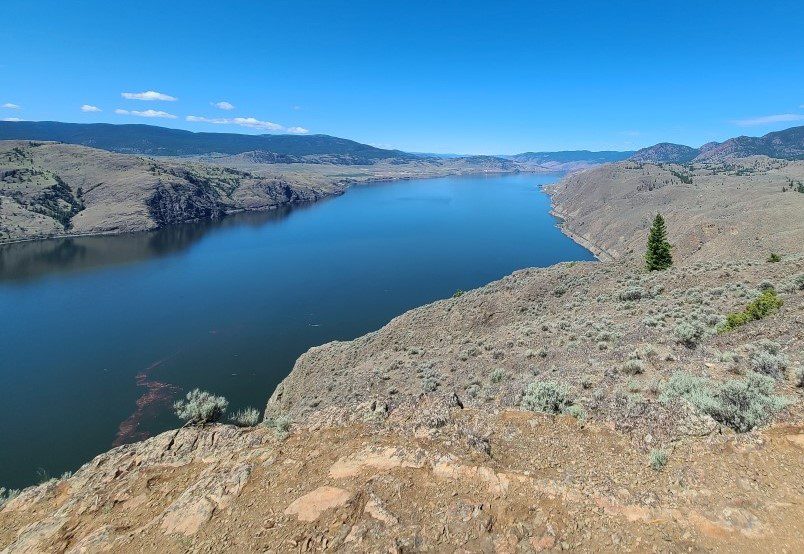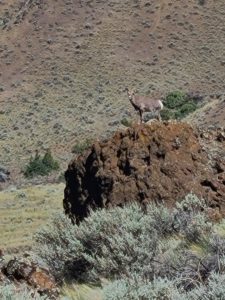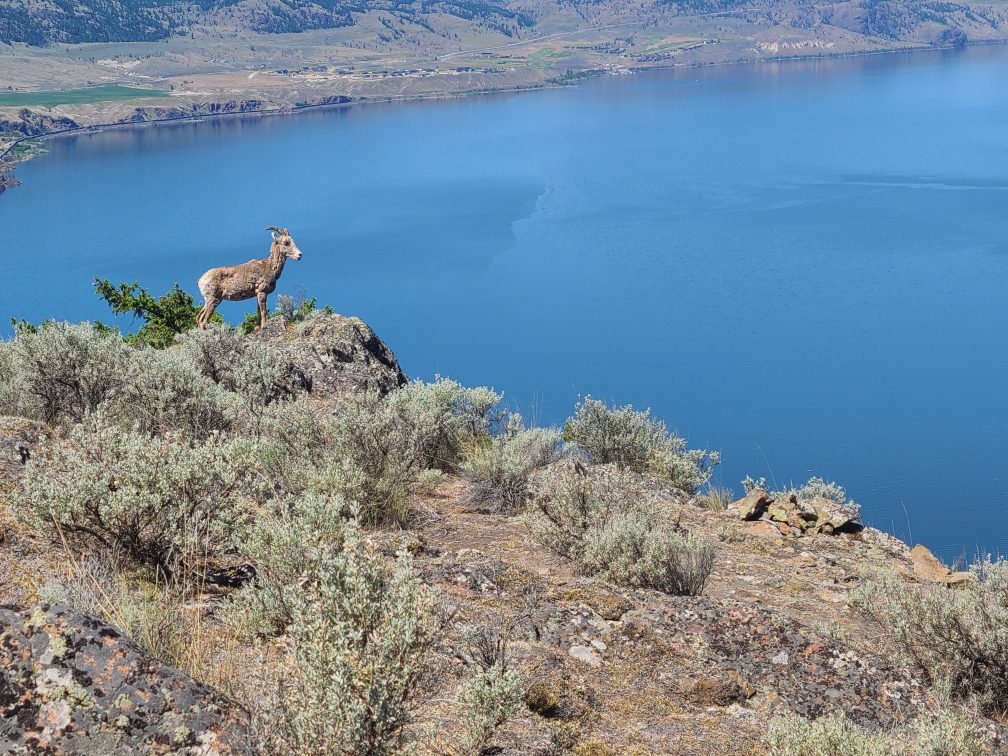In 1971, The Nature Trust of BC began around a breakfast table in Kamloops. Now, 50 years on, The Nature Trust is returning to Kamloops to expand a conservation land complex on the north side of Kamloops Lake.
The Nature Trust is seeking to purchase a 19 acre property on the north banks of Kamloops Lake directly adjacent to the Dewdrop-Rosseau Creek Wildlife Management Area. The purchase would protect a critically important winter range for Mule Deer and Bighorn Sheep as well as ensure the preservation of rare grassland ecosystems.

Protecting Land
This 19 acre property comprised of native grasslands connects the Dewdrop-Rosseau Creek Wildlife Management Area to the shores of Kamloops Lake.
This property is unserviced and undeveloped and is accessible only by boat. Rosseau Creek crosses the property from northeast to southwest flowing into the lake and creating a riparian gully through the property.
With much of the North side of the lake already protected from development, the purchase of this property would protect an infill shoreline parcel from future development and also maintain a continuous area of relatively undisturbed grassland ecosystem.

Left to right: American Badger, Flammulated Owl, Lewis’s Woodpecker
Saving Species
The area on the north side of Kamloops Lake is prime habitat for Mule Deer and Bighorn Sheep. All of the habitat types needed by Bighorn Sheep are found on the slopes and shoreline surrounding the lake. These contiguous habitats provide food, water, escape from predators, along with rutting (mating) and lambing (birthing) places that allow these majestic animals to thrive in the hot, dry grassland conditions.
In winter, Mule Deer come down from the hills to forage on the grasses in lower elevation areas. Endangered American Badgers have been seen in the adjacent Wildlife Management Area and they likely also use the Kamloops Lake – Rosseau Creek property.

In the sky, a Lewis’s Woodpecker darts over the grasses, catching a meal on the fly. Unusual for a woodpecker, these birds do not drill into trees to find tasty bugs. Instead, they have adapted to their grasslands and riparian habitat by catching insects in the air. Fewer than 500 breeding pairs are left in Canada due to habitat destruction and they are listed as threatened under the Species At Risk Act.
At night, the tiny but fierce Flammulated Owl calls its distinctive hoot across the lake. Its low-pitched call masks its diminutive size, just as its camouflaged grey and rust feathers and dark eyes hide it from the sight of predators. At just 15-17 cm tall the Flammulated Owl is among the smallest owls in North America and is listed as a species of special concern under the Species At Risk Act.

